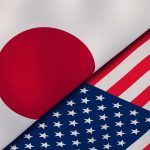

Taiwan’s semiconductor export controls push Chinese chipmakers toward domestic innovation and increased state support
Key Takeaways
- Chinese chipmaking stocks climb 2-3% as Taiwan adds Huawei and SMIC to export control blacklist, with investors betting on increased government support for domestic semiconductor industry
- Taiwan implements strategic export controls requiring government approval for all shipments to 601 blacklisted entities, including Chinese tech giants, aligning with US semiconductor restrictions
- SMIC rises nearly 3% alongside Hua Hong Semiconductor and NAURA Technology Group, outperforming broader Chinese market amid expectations of accelerated self-sufficiency push
Introduction
Chinese semiconductor stocks surge as Taiwan escalates trade restrictions against Beijing’s leading chipmakers, creating market expectations for expanded government backing of domestic technology development. Taiwan’s Ministry of Commerce has placed Huawei Technologies and Semiconductor Manufacturing International Corp on its strategic export control list, requiring government permits for all Taiwanese shipments to these firms.
The restrictions target critical components for advanced chip production, including plant construction techniques, lithography equipment, and materials essential for AI semiconductors. This decision marks a strategic escalation in the tech Cold War between Taiwan and China, with immediate implications for global semiconductor supply chains.
Key Developments
Taiwan’s International Trade Administration added 601 entities to its “strategic high-tech commodities” blacklist in June, with Huawei and SMIC joining organizations such as the Taliban and al-Qaeda on the restricted list. The move directly aligns Taiwan’s export policies with US semiconductor sanctions, reinforcing coordinated Western efforts to limit China’s access to cutting-edge technology.
The restrictions specifically target Taiwan’s dominance in advanced semiconductor manufacturing equipment and materials. TSMC, the world’s largest contract chipmaker, already adheres to US export controls that prohibit supplying certain advanced chips to Chinese customers. The new Taiwanese measures extend these limitations across the island’s entire semiconductor ecosystem.
Bloomberg News reported in 2023 that several Taiwanese companies were assisting Huawei in building a secret network of chip plants across Southern China. These facilities focus on producing China’s most advanced homegrown artificial intelligence chips to compete with US-based Nvidia and supply domestic tech firms amid existing export restrictions.
Market Impact
Semiconductor Manufacturing International Corp leads gains with a nearly 3% climb, while Hua Hong Semiconductor and NAURA Technology Group advance between 2% and 3%. These chipmaker gains significantly outperform the broader Chinese stock market’s tepid performance, according to Investing.com.
The positive market response reflects investor optimism about potential government support for domestic semiconductor development. China’s leadership has expressed strong objections to Taiwan’s export restrictions and promised measures to protect its economic interests, including possible increased military actions and constraints on Taiwanese companies operating in mainland China.
US technology sector strength also supports the rally, with Wall Street reaching record highs on Friday. This broader tech momentum creates favorable conditions for Chinese chipmakers despite facing increased export restrictions from Taiwan.
Strategic Insights
Taiwan’s export controls represent a significant shift from neutral supplier to assertive gatekeeper in the global semiconductor industry. The island leverages its technological dominance to influence global chip flows while aligning with Western security interests, strengthening what analysts call Taiwan’s “silicon shield.”
The restrictions accelerate China’s push toward semiconductor self-sufficiency, creating opportunities for domestic suppliers while challenging access to cutting-edge technology. Chinese firms demonstrate resilience through innovations like Huawei’s Mate 60 smartphone, powered by a 7nm chip produced by SMIC despite existing sanctions.
Global semiconductor supply chains fragment along geopolitical lines, with countries tightening export controls and incentivizing domestic production. This fragmentation increases costs for companies dependent on AI chips while creating investment opportunities in allied semiconductor manufacturing.
Expert Opinions and Data
IDC analyst Galen Zeng views the restrictions as creating dual effects on Chinese semiconductor development. “The export controls hinder Chinese firms in the short term but ultimately accelerate China’s push for self-sufficiency and bolster domestic suppliers,” Zeng explains.
Huawei founder Ren Zhengfei downplays the restrictions’ impact, stating that technological workarounds like chip stacking can compensate for being a generation behind US capabilities. This approach allows Chinese companies to achieve competitive performance despite technology limitations.
Taiwan’s new “N-1” policy restricts exports of TSMC’s most advanced process technologies, with only one generation older than current flagship nodes available for export. Enforcement begins by late 2025, potentially keeping TSMC’s upcoming N2P and A16 Super Power nodes exclusively for domestic or allied use.
Conclusion
Taiwan’s semiconductor export restrictions mark a decisive shift in global technology competition, with Chinese chipmakers responding through market gains and anticipated government support. The controls disrupt China’s covert chip plant construction in southern regions while forcing technological innovation through domestic alternatives.
The market’s positive reaction to these restrictions signals investor confidence in China’s ability to develop independent semiconductor capabilities. As geopolitical tensions reshape global supply chains, the semiconductor industry becomes increasingly fragmented along alliance lines, creating both challenges and opportunities for market participants across the technology ecosystem.








